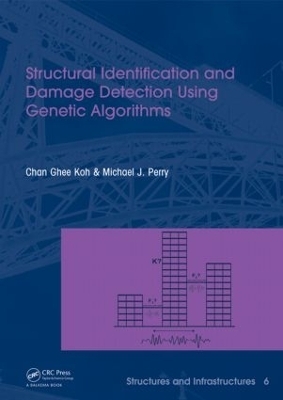
Structural Identification and Damage Detection using Genetic Algorithms
Structures and Infrastructures Book Series, Vol. 6
Seiten
2009
CRC Press (Verlag)
978-0-415-46102-3 (ISBN)
CRC Press (Verlag)
978-0-415-46102-3 (ISBN)
Robust and efficient methods have successfully been developed on the basis of genetic algorithms (GA). This title presents the development of the GA-based identification strategy. It focuses on structural identification problems with limited and noise contaminated measurements.
Rapid advances in computational methods and computer capabilities have led to a new generation of structural identification strategies. Robust and efficient methods have successfully been developed on the basis of genetic algorithms (GA). This volume presents the development of a novel GA-based identification strategy that contains several advantageous features compared to previous methods. Focusing on structural identification problems with limited and noise contaminated measurements; it provides insight into the effects of various identification parameters on the identification accuracy for systems with known mass. It then proposes a generalization for systems with unknown mass, stiffness and damping properties. The GA identification strategy is subsequently extended for structural damage detection. The findings of the output-only strategy and substructural identification represent a great leap forward from the practical point of view. This book is intended for researchers, engineers and graduate students in structural and mechanical engineering, particularly for those interested in model calibration, parameter estimation and damage detection of structural and mechanical systems using the state-of-the-art GA methodology.
Rapid advances in computational methods and computer capabilities have led to a new generation of structural identification strategies. Robust and efficient methods have successfully been developed on the basis of genetic algorithms (GA). This volume presents the development of a novel GA-based identification strategy that contains several advantageous features compared to previous methods. Focusing on structural identification problems with limited and noise contaminated measurements; it provides insight into the effects of various identification parameters on the identification accuracy for systems with known mass. It then proposes a generalization for systems with unknown mass, stiffness and damping properties. The GA identification strategy is subsequently extended for structural damage detection. The findings of the output-only strategy and substructural identification represent a great leap forward from the practical point of view. This book is intended for researchers, engineers and graduate students in structural and mechanical engineering, particularly for those interested in model calibration, parameter estimation and damage detection of structural and mechanical systems using the state-of-the-art GA methodology.
Chan Ghee Koh, Michael J. Perry,
1. Introduction; 2. A Primer to Genetic Algorithms; 3. An Improved GA Strategy; 4. Structural Identification by GA; 5. Output-Only Structural Identification; 6. Structural Damage Detection; 7. Experimental Verification Study; 8. Substructure Methods of Identification; References, Appendix, Index.
| Reihe/Serie | Structures and Infrastructures |
|---|---|
| Verlagsort | London |
| Sprache | englisch |
| Maße | 174 x 246 mm |
| Gewicht | 460 g |
| Themenwelt | Technik ► Bauwesen |
| ISBN-10 | 0-415-46102-2 / 0415461022 |
| ISBN-13 | 978-0-415-46102-3 / 9780415461023 |
| Zustand | Neuware |
| Haben Sie eine Frage zum Produkt? |
Mehr entdecken
aus dem Bereich
aus dem Bereich
Grundlagen und Vorgehensweisen
Buch | Softcover (2021)
Springer Fachmedien Wiesbaden GmbH (Verlag)
37,99 €
Bemessung von Stahlbauten nach Eurocode mit zahlreichen Beispielen
Buch | Hardcover (2024)
Springer Vieweg (Verlag)
59,99 €
Kommentar zu VOB/C ATV DIN 18340, ATV DIN 18299
Buch | Softcover (2024)
DIN Media (Verlag)
69,00 €


